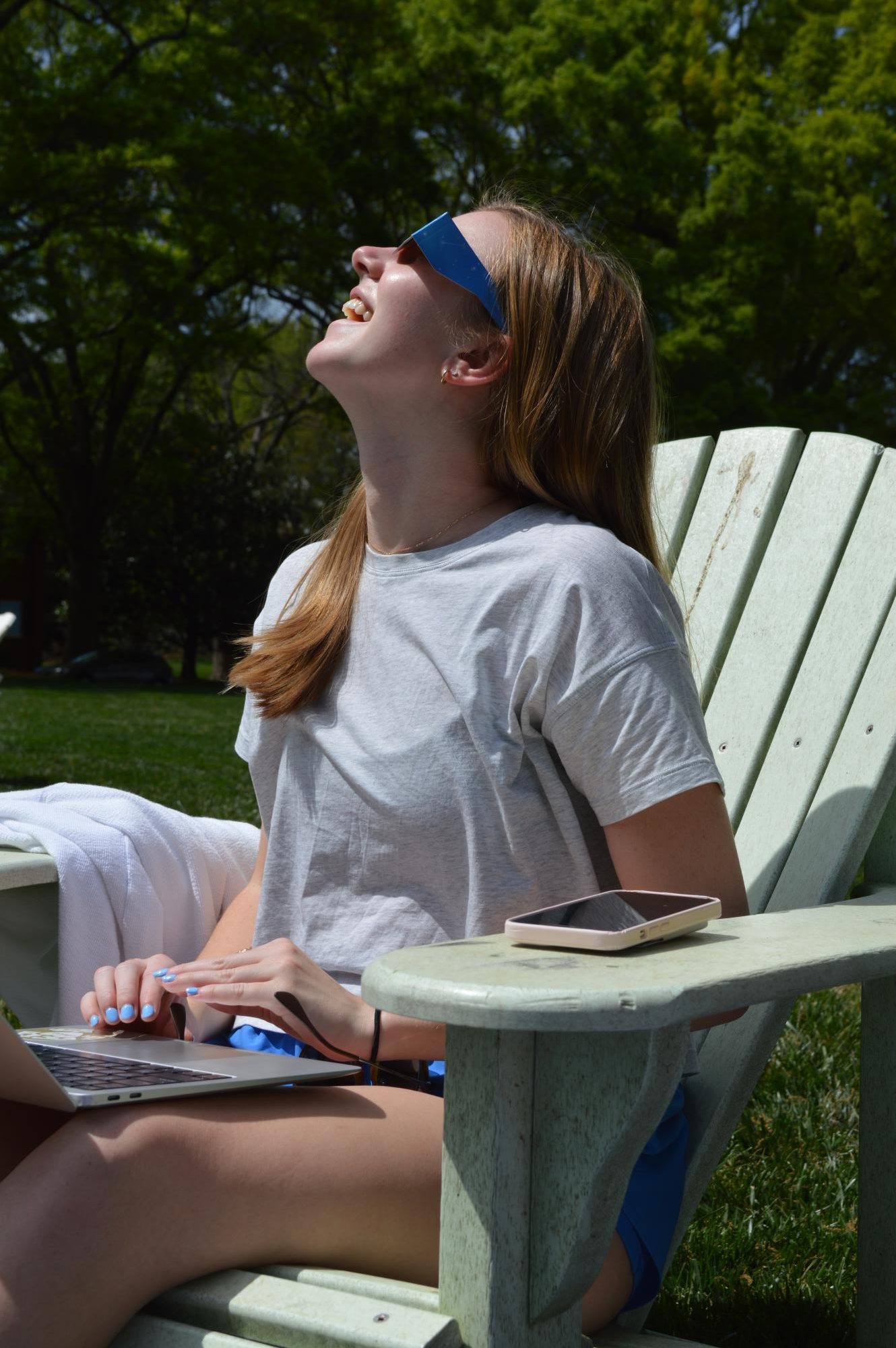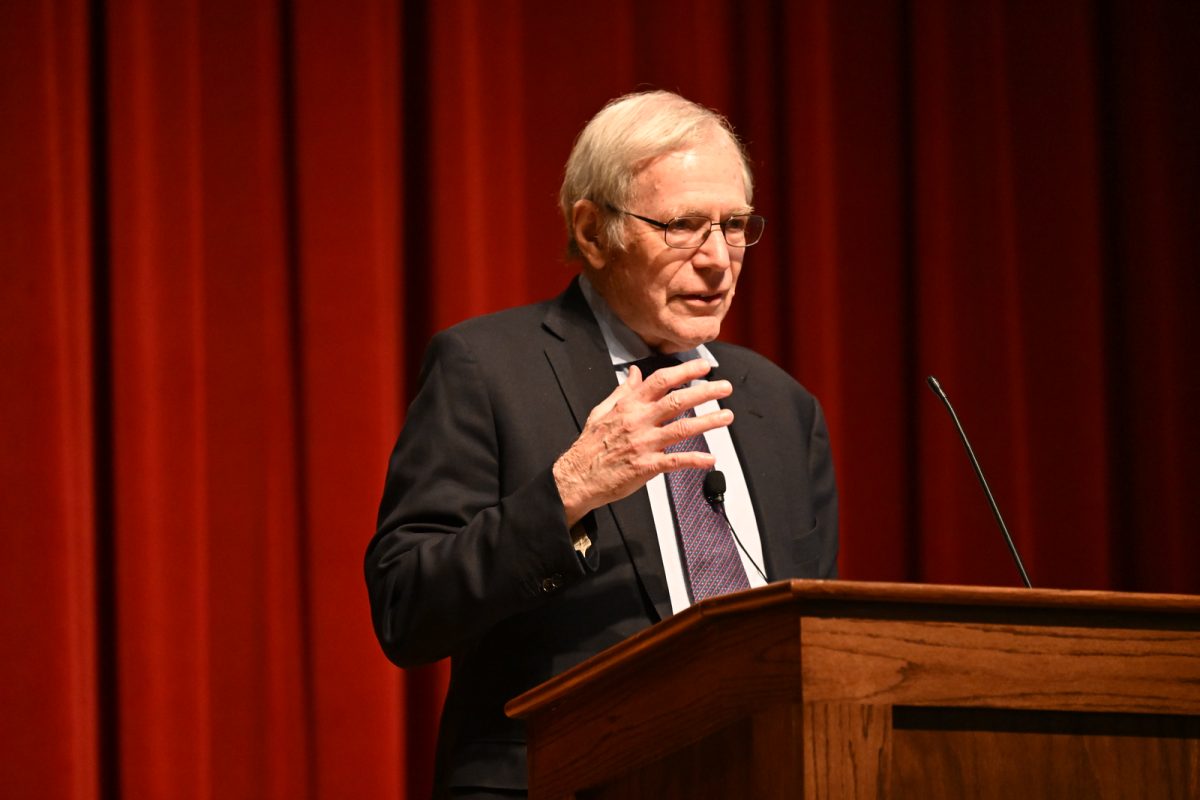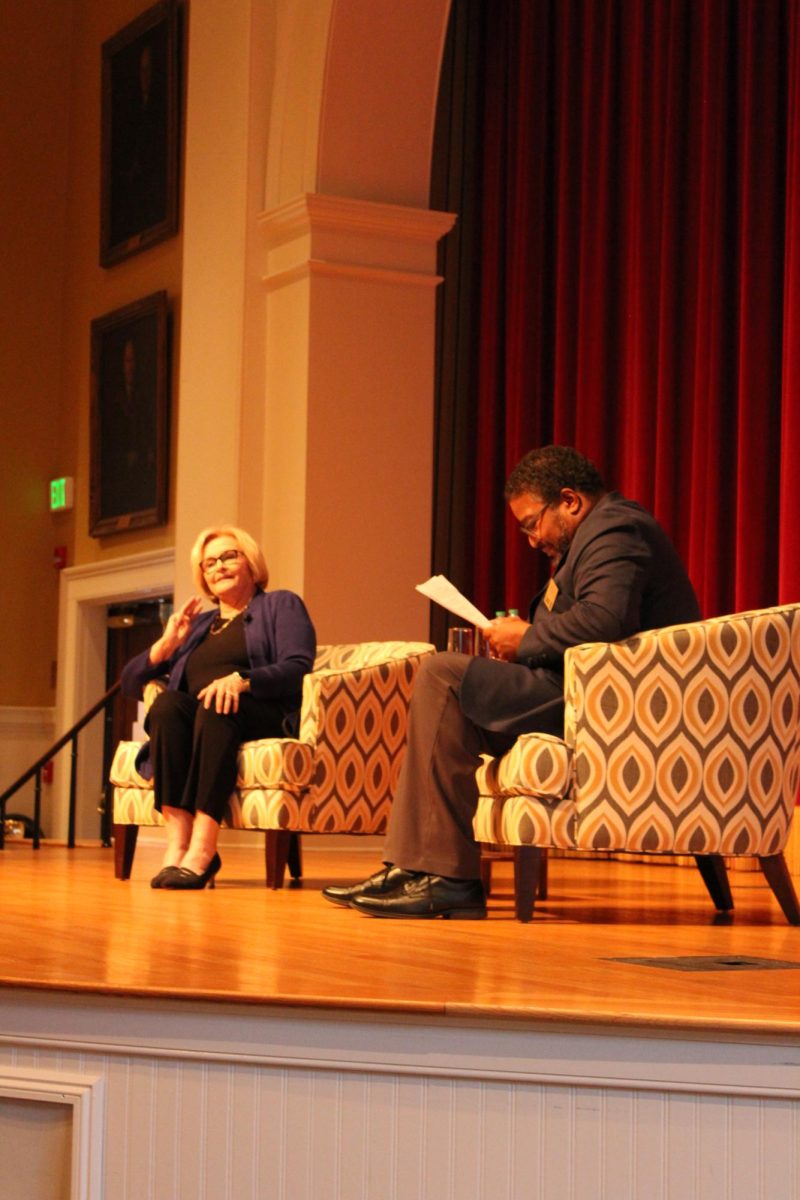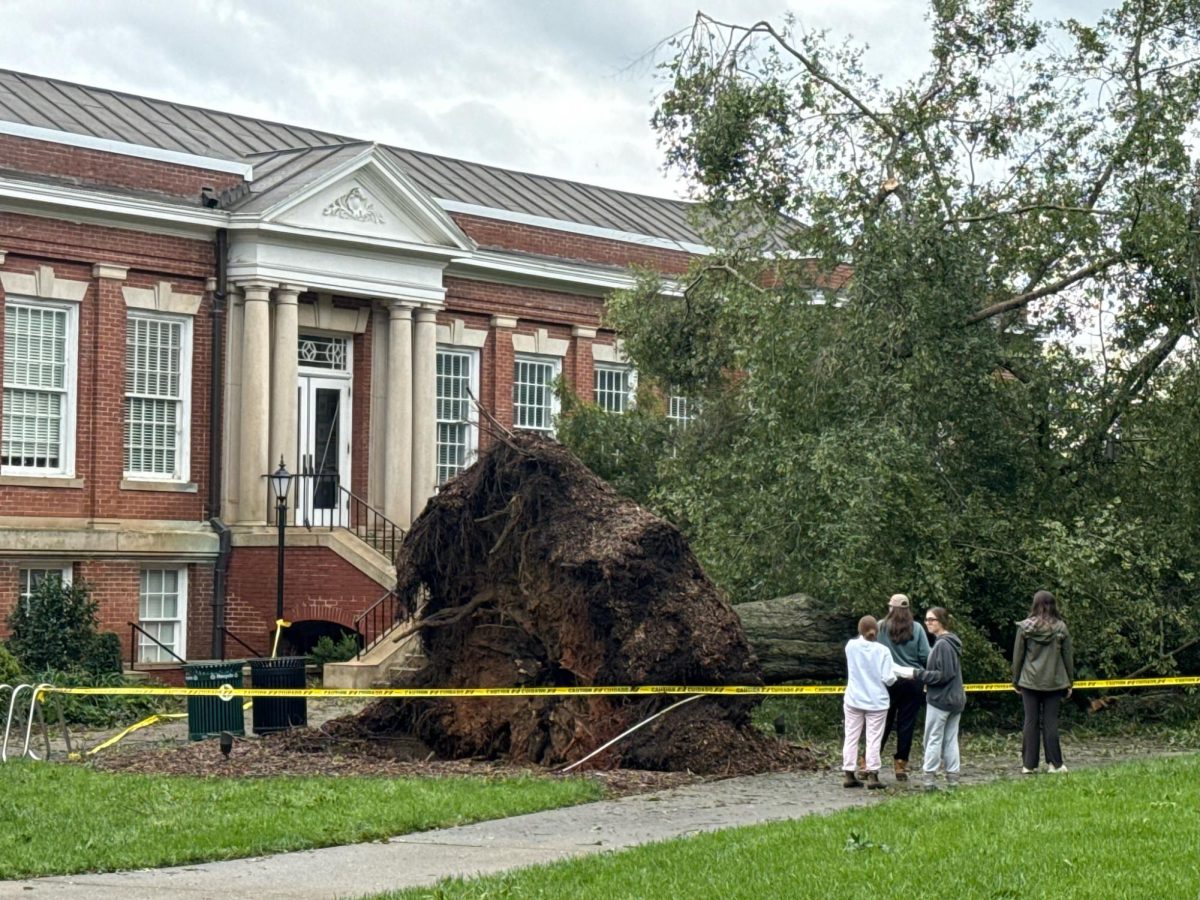The 2024 solar eclipse took place on Apr. 8, immediately upon students’ return from spring break. Several professors either canceled class or used class time to watch the eclipse. The surrounding Spartanburg school districts also canceled school and/or held an e-learning day.
The peak of the eclipse was at 3:09 p.m. for those in Spartanburg, South Carolina, though we did not experience totality.
In preparation for the eclipse, students and the surrounding community were scrambling to find certified eclipse glasses. The library staff received several calls the day of from the Spartanburg community asking to borrow glasses. This high demand resulted in the campus running out of supply for students.
Professors were equally excited as students to see the eclipse.
Mackay Salley, professor of physics, helped his lab students set up a large solar telescope, solar binoculars and a smaller telescope to view the eclipse
Salley and his students also handed out nearly 200 eclipse glasses to students around campus, sent to the department from a NASA grant. He canceled his Monday lab for the eclipse, so students came to view it with him using the equipment provided by the department.
For approximately four hours, students around campus were outside on the lawns watching the eclipse unfold. Many students were in front of the Roger Milliken Science Center as well as scattered throughout the Greek village.
“The eclipse to me looked awesome, it was my highlight of the year so far because I love space,” said Trey Baker ‘24.
Baker was in senior seminar with Timothy Bersak, associate professor and chair of economics, during the eclipse, and Bersak dismissed the class early for everyone to see the peak of the eclipse.
“It was fun to watch this event with a bunch of fellow students,” said Baker. “I think this is the first time a lot of us have been able to see a partial eclipse with this much coverage.”
Lucy Campbell ‘25, a physics major and president of the Society of Physics Students, used an aluminum baking pan to project the Wofford logo onto a white surface using the eclipse as lighting, created by the only part of the sun that was still visible. This meant the logo was created out of crescent shapes of the remaining sun exposure.
“It is not an artificial event, it’s not the Super Bowl that we created as humans, this is a special event that ‘Mother Nature’ designed,” said Salley. “One of the hallmarks of science is prediction…and we take it for granted.”
He spoke about how impressive prediction has come and how science has given humanity the ability to predict the future.
“If you can predict when the sun is going to go dark, that’s magic; we predict the future,” said Salley. “(On April 1), the eclipse had not happened; it was in the future, and we predicted it was going to happen, and it did.”
The last partial solar eclipse visible to Spartanburg took place in August 2017. Wofford’s students were not in general classes during this time; however, summer students, orientation staff leaders, faculty and staff were present to watch it at Wofford.
The next predicted eclipse visible for Spartanburg will be in the year 2045, 21 years from now and long after the students present for the 2024 eclipse will have graduated.




